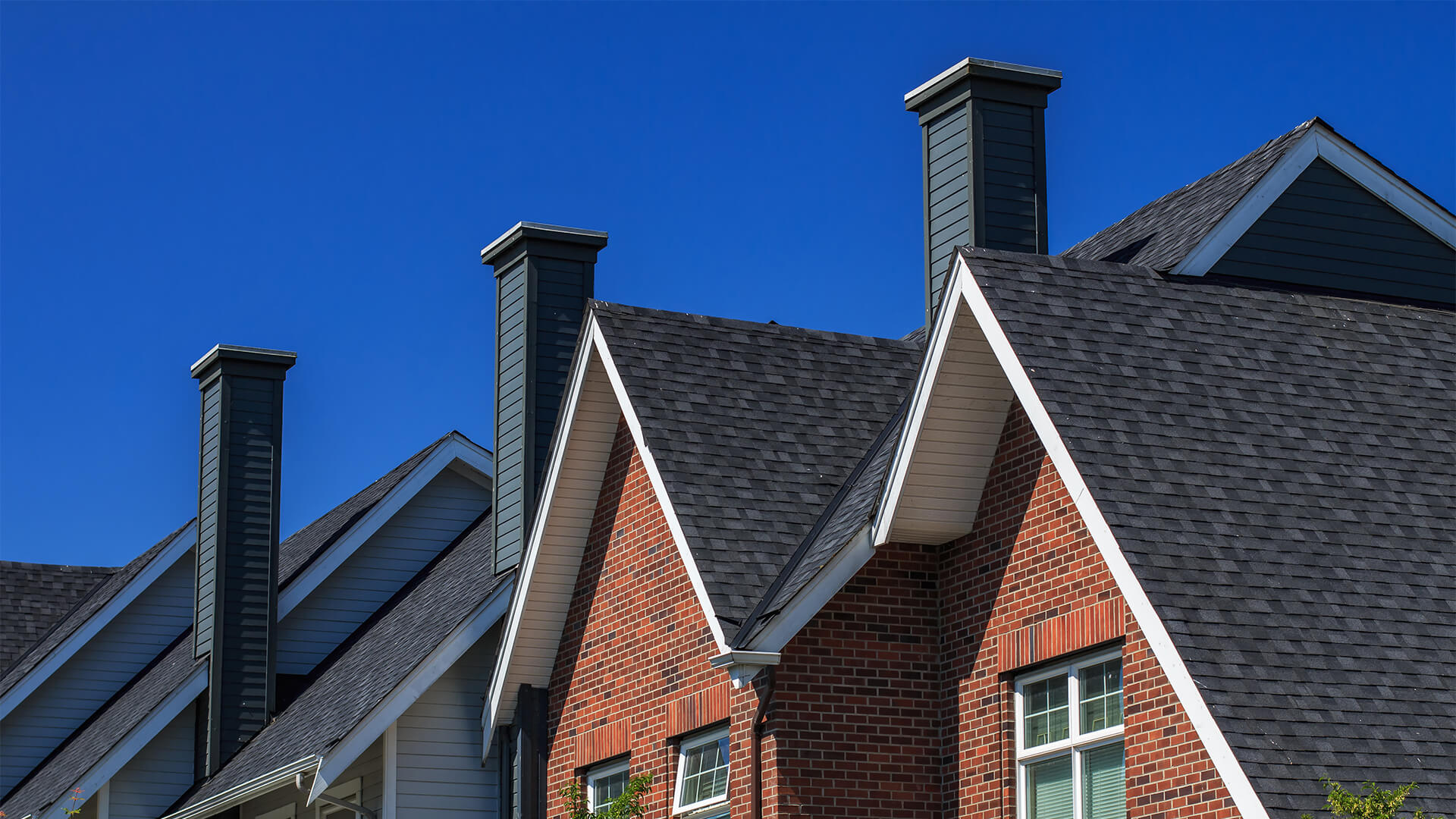Chimneys and fireplaces have always been staples of a traditional home. As time goes on, many homebuyers search for a house with a fireplace and chimney specifically for the cosy feel and the sense of lifestyle the pair brings.
When searching for a house or planning to build a home with a chimney, new homeowners should keep their preferences in mind to determine which type of chimney works for them.
1. Wood-Burning Stove Chimney
These chimneys are much thinner and take up less space than the others on this list. They serve as an excellent functional piece for homeowners who don’t care so much about the looks of their chimneys and find wood-burning fireplaces to be more efficient and attractive than electric or gas options. This chimney looks more like a flue than a standard chimney shape.
Its thinner size can make it inconspicuous for homeowners who don’t care about having a chimney as a statement piece. However, if a homeowner desires a chimney later, they can choose to build a bulkier chimney around the flue. This option leaves plenty of room for growth and changes in style.
Unfortunately, any chimney built around the pipe must resist the high temperatures that come from the wood-burning stove, so it’s not plausible for every circumstance. For many homeowners, choosing an electric fireplace ends up being more convenient.
2. Brick Chimney
A brick chimney is usually what comes to mind when a person pictures a chimney on their home. It’s the most well-known kind of chimney and is the standard choice, as it’s both an affordable option and looks clean and professional when done correctly. Many people may opt for a brick chimney simply because it’s the easiest option and can look cohesive with any house.
In addition to matching almost any home or roof, the brick chimney is known for being practical and durable. It can withstand the searing temperatures of around 980ºC, making it the perfect option for people who plan to run their fireplace often during the winter.
Because of the bricks, though, this chimney type is porous and could have issues in a wet environment. Annual maintenance is mandatory to keep this chimney in working condition so it can avoid erosion. Plus, if it’s built incorrectly or exposed to too much water over time, homeowners may have to tackle internal rotting and structural problems, which can be costly to contend with.
3. Metal Chimney
Metal chimneys are the kind with the sleekest appearance. They can fit in with almost any home design because of their versatile look. While they are beautiful, homeowners with metal chimneys should be sure to follow fire safety regulations even more aggressively than with other types of chimneys.
The great thing about metal chimneys is that they are naturally resistant to nuisances. Homeowners won’t find pests or rust plaguing the surface of their metal chimneys, meaning they’ll have one fewer annoyance to deal with when performing maintenance. Additionally, metal chimneys match well with modern and industrial homes, some of the most popular design styles out there.
While metal chimneys are great, homeowners have to watch out for running their fireplaces too often or too hot. Even if this type of chimney is durable, metal can still warp, leaving the chimney looking a bit unusual.
4. Stone Chimney
Stone chimneys can also be quite gorgeous and fit in with many home aesthetics. These chimneys have a tough surface, and each one is unique because every stone is different. Homeowners won’t find their stone chimney replicated elsewhere because it’s impossible to find two of the exact same stones.
These chimneys are also porous, but unlike their brick counterparts, they don’t have as much of an issue with erosion. Perhaps the most important drawback of opting for a stone chimney is how expensive it is. Assembling a stone chimney takes more time and work, not to mention experience, because it is unlike any other type of chimney.
5. Pre-Fabricated Chimney
Pre-fabricated chimneys are typically built off-site. When finished with production, these chimneys are transported to their final destinations. They may be a bit weaker in performance than a standard chimney, but they make up for that with being budget-friendly.
These chimneys cost less to produce and could be a great alternative for folks who want a masonry look to their chimney but don’t want to go over their budget. The only downside of the pre-fabricated chimney is that it’s not as durable, relatively speaking, and needs more maintenance compared to other types of chimneys.
Are Fireplaces and Chimneys Worth It?
Depending on who you ask, the general aesthetic of the chimney isn’t worth its drawbacks. Chimneys and fireplaces aren’t always environmentally friendly due to the emissions that leak into the air with wood-burning fireplaces. Plus, the maintenance needs can be a chore for many people, though it’s a chore that must be completed regularly, else homeowners risk a house fire.
Electric and gas fireplaces are a bit more environmentally friendly, so for pollution-conscious individuals who want the appearance of a chimney but less risk of harmful emissions, alternative fireplaces are the way to go.
Still, for all their drawbacks, fireplaces and chimneys are a great way to make a house feel like a home. For those who live in areas with frequent winter storms, fireplaces could be their way to keep warm and cosy during a power outage.
Also, as many homeowners and aspiring homeowners have already figured out, chimneys and fireplaces can be aesthetically pleasing and pull the appearance of a home together. Determining which type of chimney to use depends on a homeowner’s budget and preferences, but any kind could fit in flawlessly with the right style.
By Evelyn Long, Editor-in-Chief of Renovated.






























